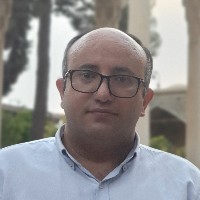Post-Traumatic Stress Disorder in Iranian Healthcare Workers Dealing with COVID-19 Pandemic
This study was performed aiming to determine the extent of PTSD and its related factors among Iranian HSWs.
The present study was conducted cross-sectional and online, from 5 May to 23 August 2020, on 418 Iranian HSWs, including (physician, nurse & laboratory technician, health worker, administrative staff, radiologist). Data were handed over and collected electronically through the Porsline site using the Impact of Event Scale-Revised (IES-R) standard questionnaire. Data were analyzed using descriptive statistics, t-test, and analysis of variance (ANOVA) in SPSS16 software.
Most participants in the study (40.4%) were in the age group of 30 to 39 years. Out of 286 individuals who had reported PTSD symptoms, the majority were women (73.1%) and married (71.3%). Among the HSWs with PTSD, 16% had mild, 14.8% had moderate, and 37.6% had severe symptoms, and 31.6% were asymptomatic. PTSD had a statistically significant relationship to gender, type of employment, smoking, a history of specific diseases, the probability of exposure to COVID-19, and a history of communication with a COVID-19 patient (P<0.05).
Based on the results of the study, most HSWs (two thirds) had PTSD, which due to the occupational importance of this group and to increase the physical and mental health of these HSWs, it is recommended that post-crisis effective and efficient interventions be provided to identify and treat individuals with PTSD and to empower HSWs through effective and stable training programs, as well as psychological counseling at the individual and group levels.
- حق عضویت دریافتی صرف حمایت از نشریات عضو و نگهداری، تکمیل و توسعه مگیران میشود.
- پرداخت حق اشتراک و دانلود مقالات اجازه بازنشر آن در سایر رسانههای چاپی و دیجیتال را به کاربر نمیدهد.


